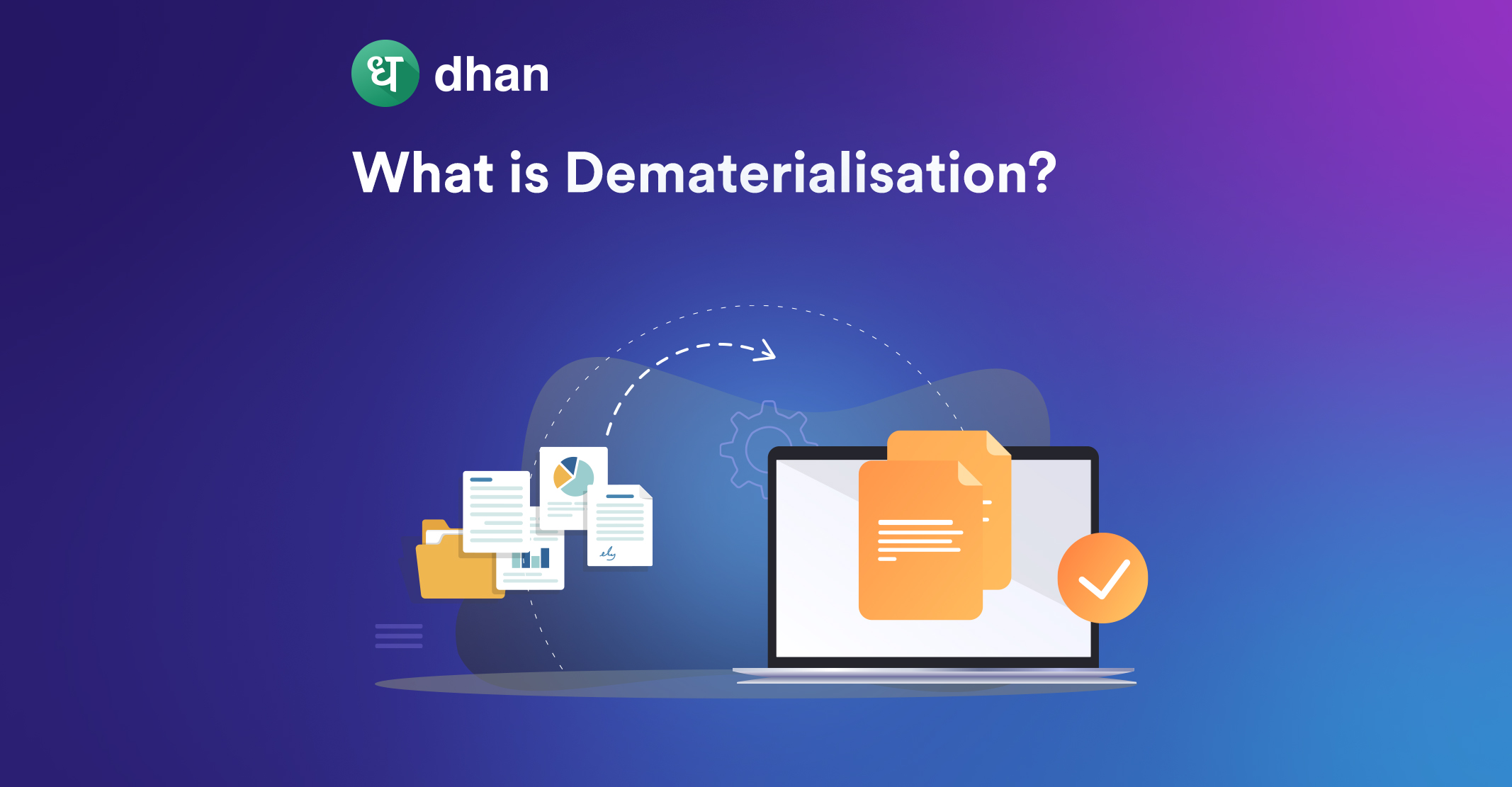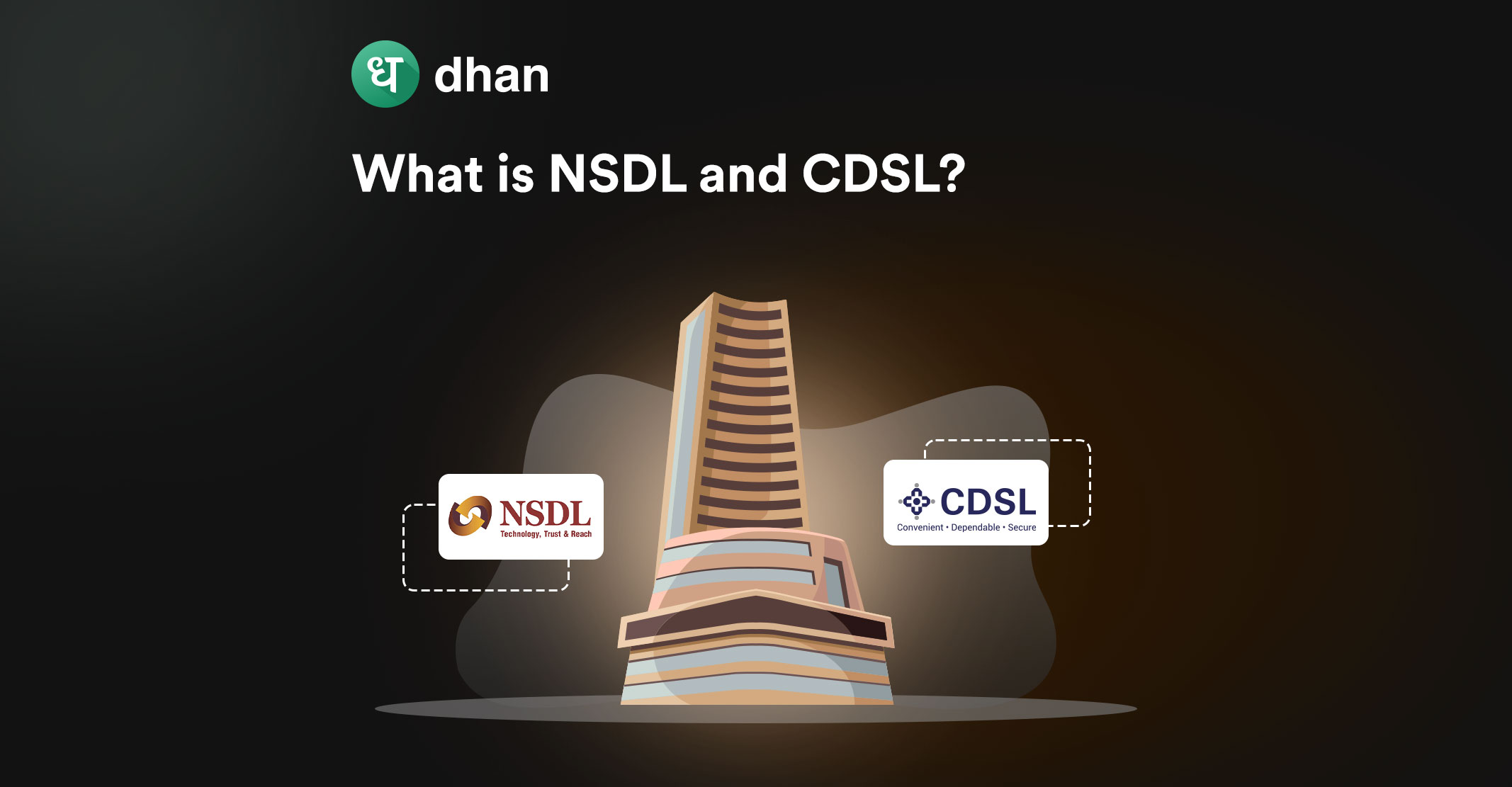Holding shares physically comes with the risk of forgeries, delay in certificate transfers, and even loss of share certificates.
There is no longer any issuance of new shares in physical format. However, if you have old shares, it is suggested to convert them into a digital format.
This is known as dematerialisation. In this article, we will understand what is dematerialisation and look at its process, benefits and challenges.
What Is Dematerialisation?
Dematerialisation refers to the process of converting physical securities into electronic format held in the Demat account.
A depository holds electronic securities in the form of bonds, mutual funds, or government securities.
Two depositories that are licensed to operate by SEBI include NSDL (National Securities Depository Ltd.) and CDSL (Central Depository Services (India) Ltd.)
This process also assists the investors in eliminating the need for brokers or other intermediaries for trading and investing in the stock market by providing them with complete control.
By leveraging technology, dematerialisation simplifies trading, eliminates additional expenses and makes it simpler for global traders and investors to interact and invest.
Process of Dematerialisation
We can break down the process of dematerialisation into five steps listed below:
1. Opening Demat Account
To begin the process of dematerialisation, you must open a demat account. Shortlist the broker who provides demat services along with various tools and features and open up an account.
When looking for a online trading platform to begin trading in the stock market, Dhan can be an option.
2. Fill Out the Dematerialisation Request Form
The next step is to deposit the Dematerialisation Request Form along with the share certificate with the DP.
Do not forget to mention ‘Surrendered for Dematerialisation’ on each share certificate you provide.
3. DP Processes Request
The next step belongs to the DP which processes your request and transfers it to the transfer agents and registrars for further procedure.
4. Approval of Request
The physical share certificates will be destroyed as soon as the request is approved and the depository will be intimated about the confirmation.
5. Dematerialisation Confirmation
As soon as the depository receives the confirmation on dematerialisation, the investor will receive an electronic credit in their account. This process might take up to 30 days after the initiation of the request.
Benefits of Dematerialisation
With a thorough knowledge of what is dematerialisation and how is it executed, let us now look at its benefits:
Convenience
The core benefit of dematerialisation is that it eliminates the need to be physically present to trade and invest.
It allows individuals to transact from anywhere through their computers via web trading platform and smartphones through an online trading app.
The dematerialisation process makes you the owner of the shares so no certificates need to be transferred to the company’s registrar.
Reduced Cost
The cost is significantly reduced due to multiple factors. No stamp duty is imposed on electronic securities and nominal holding charges are levied.
Additionally, the overall time required for executing a transaction is significantly reduced with no paperwork needed.
Instant Transactions
The process of buying and selling stocks becomes relatively much faster in the electronic form.
Additionally, the liquidity in the market is also introduced as a result of the ease of buying and selling securities.
Increased Transparency
Investors and traders can monitor their transactions and securities which adds a layer of transparency to their operations.
Additionally, the dangers of fraud connected with physical securities such as duplication, theft and fraud certifications also get eliminated.
Challenges of Dematerialisation
With these advantages, certain challenges come with the dematerialisation of stocks. Keep the following limitations in mind before going ahead with the process:
Complexity
The dematerialisation process can be confusing to understand and difficult to follow for individuals who are not tech-savvy or who are used to following the old method of physical transactions.
People who do not have the expertise or the facilities suffer from technological challenges that hinder their trade in the market.
Cyber Security Risks
While risks such as duplication and theft occur with physical securities, the risk of cyber attacks is prevalent with electronic securities.
Cyber assaults and data breaches can threaten the safety of the shares.
Limited Accessibility
Lastly, another challenge in the dematerialisation of shares is limited accessibility.
This facility is not available everywhere, especially in rural locations where traders and investors do not have access to technological resources to engage in online transactions.
Conclusion
Dematerialisation is a process that can make it simpler and faster to trade in the stock market in India.
It protects from risks associated with physically holding the securities and also makes the stock market more accessible with online resources.
However, you must keep in mind that it is integral to be technologically advanced to trade in the stock market after dematerialisation and also keep yourself protected from cyber security risks.
📌 You can also read:
- Can you Open Multiple Demat Accounts in India?
- Where Should You Open a Demat Account?
- Can a Demat Account be Closed Automatically
- What is NSDL and CDSL: What Do They Do?
Happy Investing 💰



